Mesenchymal-derived extracellular vesicles enhance microglia-mediated synapse remodeling after cortical injury in aging Rhesus monkeys
- PMID: 37660145
- PMCID: PMC10475204
- DOI: 10.1186/s12974-023-02880-0
Mesenchymal-derived extracellular vesicles enhance microglia-mediated synapse remodeling after cortical injury in aging Rhesus monkeys
Abstract
Understanding the microglial neuro-immune interactions in the primate brain is vital to developing therapeutics for cortical injury, such as stroke or traumatic brain injury. Our previous work showed that mesenchymal-derived extracellular vesicles (MSC-EVs) enhanced motor recovery in aged rhesus monkeys following injury of primary motor cortex (M1), by promoting homeostatic ramified microglia, reducing injury-related neuronal hyperexcitability, and enhancing synaptic plasticity in perilesional cortices. A focal lesion was induced via surgical ablation of pial blood vessels over lying the cortical hand representation of M1 of aged female rhesus monkeys, that received intravenous infusions of either vehicle (veh) or EVs 24 h and again 14 days post-injury. The current study used this same cohort to address how these injury- and recovery-associated changes relate to structural and molecular interactions between microglia and neuronal synapses. Using multi-labeling immunohistochemistry, high-resolution microscopy, and gene expression analysis, we quantified co-expression of synaptic markers (VGLUTs, GLURs, VGAT, GABARs), microglia markers (Iba1, P2RY12), and C1q, a complement pathway protein for microglia-mediated synapse phagocytosis, in perilesional M1 and premotor cortices (PMC). We compared this lesion cohort to age-matched non-lesion controls (ctr). Our findings revealed a lesion-related loss of excitatory synapses in perilesional areas, which was ameliorated by EV treatment. Further, we found region-dependent effects of EVs on microglia and C1q expression. In perilesional M1, EV treatment and enhanced functional recovery were associated with increased expression of C1q + hypertrophic microglia, which are thought to have a role in debris-clearance and anti-inflammatory functions. In PMC, EV treatment was associated with decreased C1q + synaptic tagging and microglia-spine contacts. Our results suggest that EV treatment may enhance synaptic plasticity via clearance of acute damage in perilesional M1, and thereby preventing chronic inflammation and excessive synaptic loss in PMC. These mechanisms may act to preserve synaptic cortical motor networks and a balanced normative M1/PMC synaptic function to support functional recovery after injury.
Keywords: C1q; Cortical injury; Extracellular vesicles; Microglia; Neuroinflammation; Synaptic plasticity.
© 2023. BioMed Central Ltd., part of Springer Nature.
Conflict of interest statement
The authors declare that they have no competing interests.
Figures
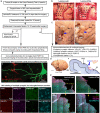
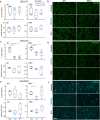
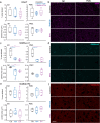
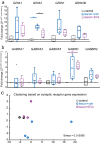
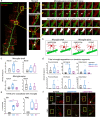
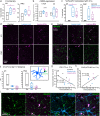
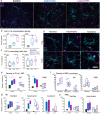
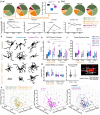
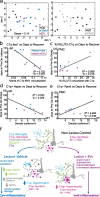
Update of
-
Mesenchymal-Derived Extracellular Vesicles Enhance Microglia-mediated Synapse Remodeling after Cortical Injury in Rhesus Monkeys.Res Sq [Preprint]. 2023 May 15:rs.3.rs-2917340. doi: 10.21203/rs.3.rs-2917340/v1. Res Sq. 2023. Update in: J Neuroinflammation. 2023 Sep 2;20(1):201. doi: 10.1186/s12974-023-02880-0. PMID: 37292805 Free PMC article. Updated. Preprint.
Similar articles
-
Mesenchymal-Derived Extracellular Vesicles Enhance Microglia-mediated Synapse Remodeling after Cortical Injury in Rhesus Monkeys.Res Sq [Preprint]. 2023 May 15:rs.3.rs-2917340. doi: 10.21203/rs.3.rs-2917340/v1. Res Sq. 2023. Update in: J Neuroinflammation. 2023 Sep 2;20(1):201. doi: 10.1186/s12974-023-02880-0. PMID: 37292805 Free PMC article. Updated. Preprint.
-
Treatment with Mesenchymal-Derived Extracellular Vesicles Reduces Injury-Related Pathology in Pyramidal Neurons of Monkey Perilesional Ventral Premotor Cortex.J Neurosci. 2020 Apr 22;40(17):3385-3407. doi: 10.1523/JNEUROSCI.2226-19.2020. Epub 2020 Apr 2. J Neurosci. 2020. PMID: 32241837 Free PMC article.
-
Extracellular vesicles from mesenchymal stem cells reduce microglial-mediated neuroinflammation after cortical injury in aged Rhesus monkeys.Geroscience. 2020 Feb;42(1):1-17. doi: 10.1007/s11357-019-00115-w. Epub 2019 Nov 6. Geroscience. 2020. PMID: 31691891 Free PMC article.
-
Extracellular Vesicles Derived From Neural Stem Cells, Astrocytes, and Microglia as Therapeutics for Easing TBI-Induced Brain Dysfunction.Stem Cells Transl Med. 2023 Mar 17;12(3):140-153. doi: 10.1093/stcltm/szad004. Stem Cells Transl Med. 2023. PMID: 36847078 Free PMC article. Review.
-
Integrated technology for evaluation of brain function and neural plasticity.Phys Med Rehabil Clin N Am. 2004 Feb;15(1):263-306. doi: 10.1016/s1047-9651(03)00124-4. Phys Med Rehabil Clin N Am. 2004. PMID: 15029909 Review.
Cited by
-
Reduction of inflammatory biomarkers underlies extracellular vesicle mediated functional recovery in an aged monkey model of cortical injury.Front Aging Neurosci. 2025 Jul 9;17:1605144. doi: 10.3389/fnagi.2025.1605144. eCollection 2025. Front Aging Neurosci. 2025. PMID: 40703679 Free PMC article.
-
Clinical Scale MSC-Derived Extracellular Vesicles Enhance Poststroke Neuroplasticity in Rodents and Non-Human Primates.J Extracell Vesicles. 2025 Jun;14(6):e70110. doi: 10.1002/jev2.70110. J Extracell Vesicles. 2025. PMID: 40545933 Free PMC article.
-
A perspective from the National Eye Institute Extracellular Vesicle Workshop: Gaps, needs, and opportunities for studies of extracellular vesicles in vision research.J Extracell Vesicles. 2024 Dec;13(12):e70023. doi: 10.1002/jev2.70023. J Extracell Vesicles. 2024. PMID: 39665315 Free PMC article. Review.
-
Microglial Responses to MSC-EVs Treatment in Animal and Cellular Models of Ischemic Stroke: a Systematic Review with Meta-analysis.Mol Neurobiol. 2025 May 22. doi: 10.1007/s12035-025-05025-x. Online ahead of print. Mol Neurobiol. 2025. PMID: 40404946 Review.
-
Extracellular vesicles lay the ground for neuronal plasticity by restoring mitochondrial function, cell metabolism and immune balance.J Cereb Blood Flow Metab. 2025 Mar 12:271678X251325039. doi: 10.1177/0271678X251325039. Online ahead of print. J Cereb Blood Flow Metab. 2025. PMID: 40072028 Free PMC article. Review.
References
-
- Edwards I, Singh I, Rose’meyer R. The role of cortisol in the development of post-stroke dementia: a narrative review. Heart Mind. 2022;6:151. doi: 10.4103/hm.hm_32_22. - DOI
MeSH terms
Substances
Grants and funding
LinkOut - more resources
Full Text Sources

